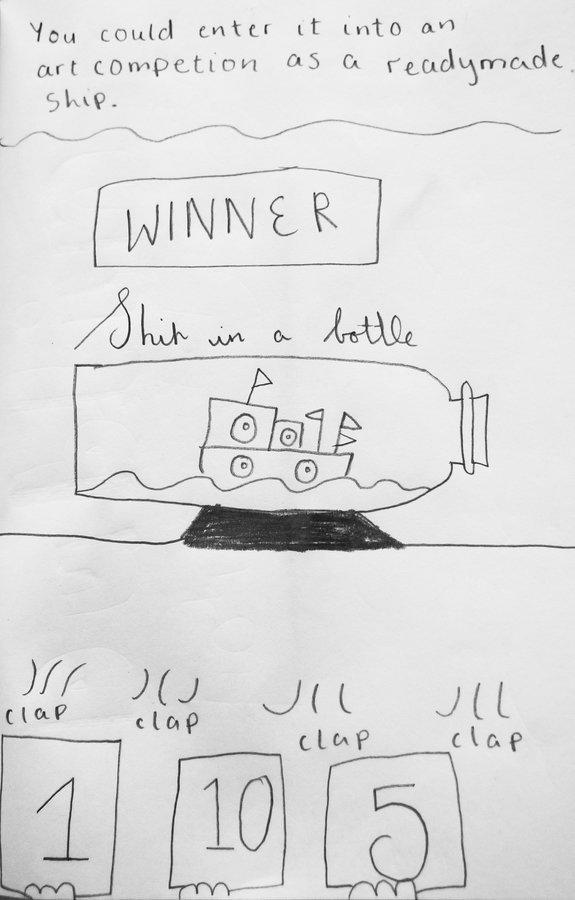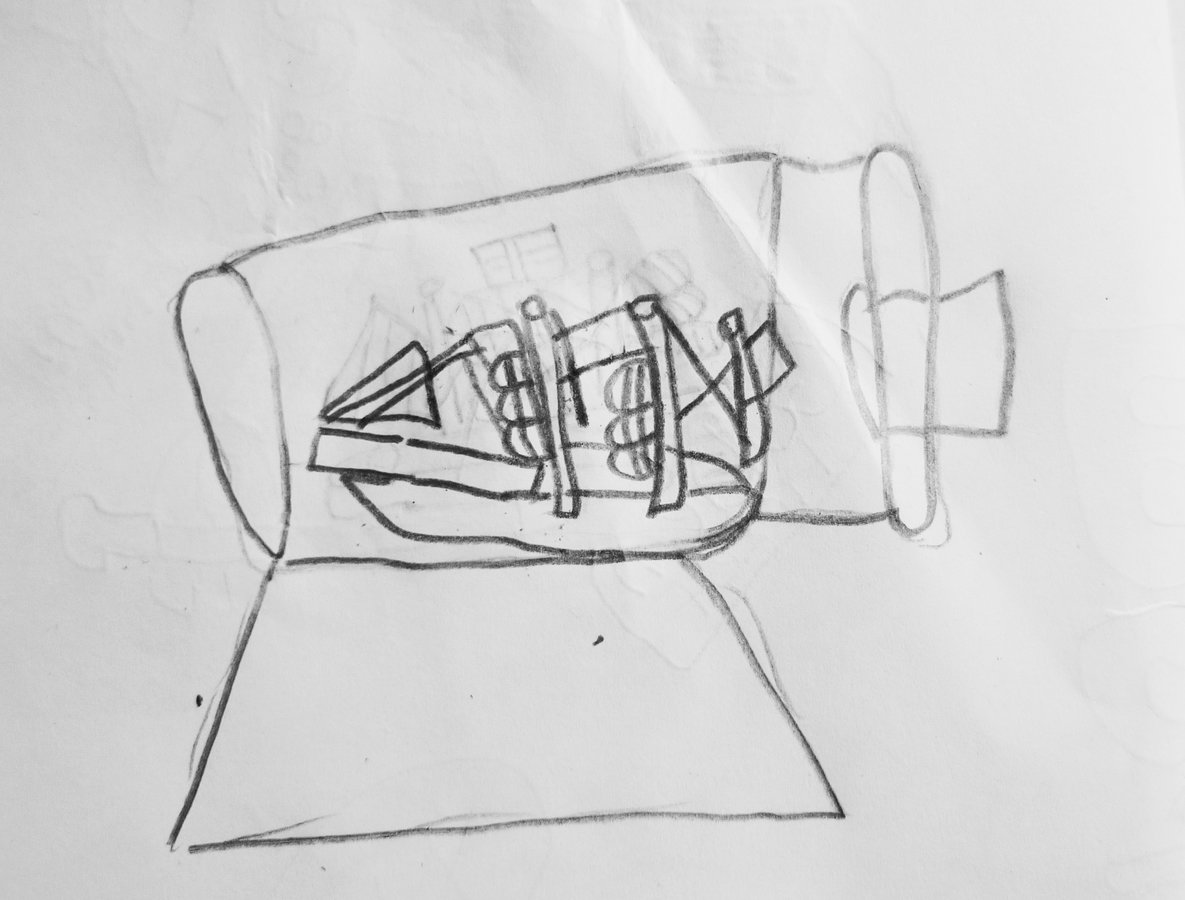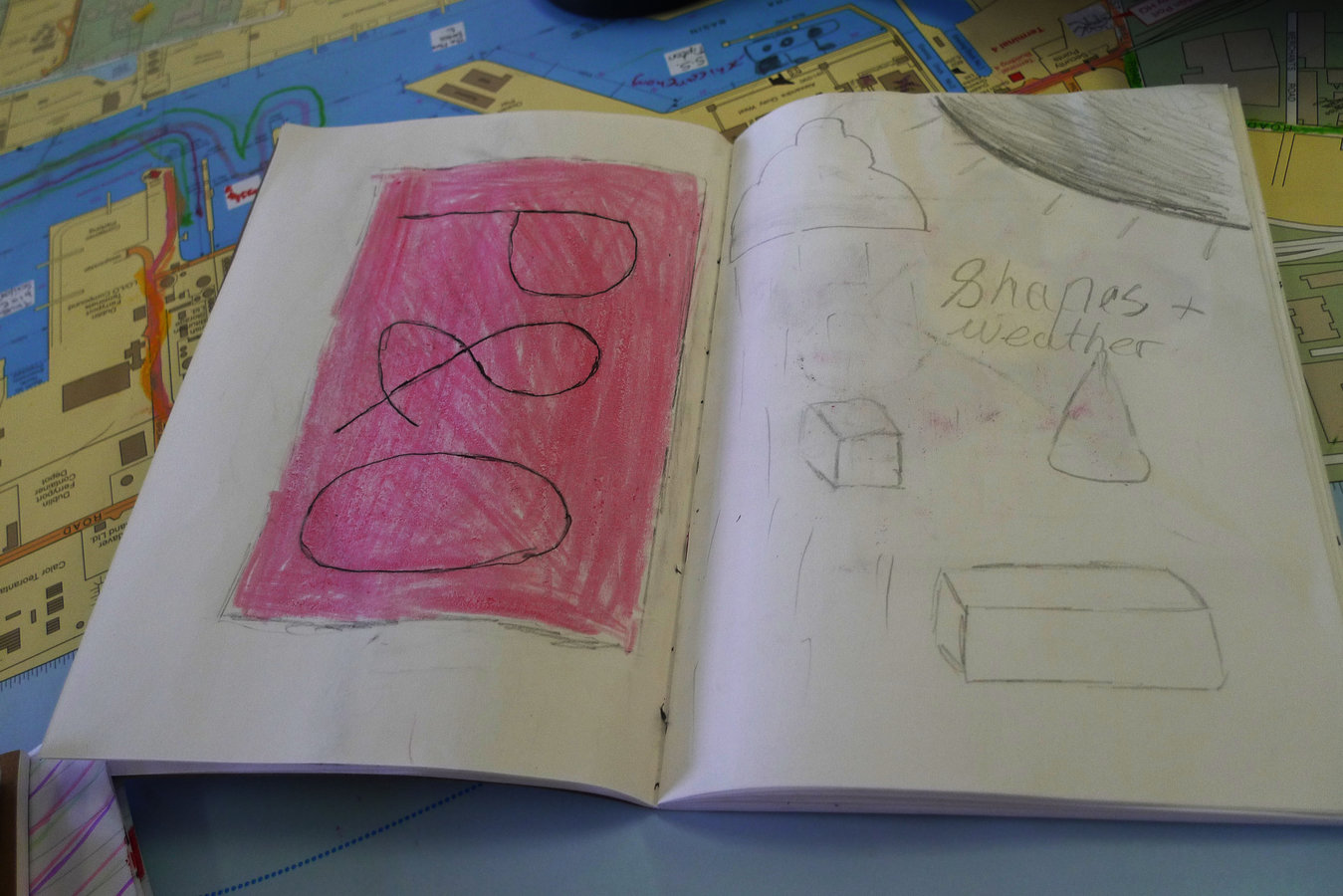Dublin Ships Engagement Programme

About
In Spring, 2015, Dublin City Council Public Art Programme & Dublin City Arts Office invited children from the Docklands area to go on a journey. Fourth to sixth classes from St Lawrence’s Girls National School, St Lawrence’s Boys National School (Sheriff Street), St Joseph’s National School (East Wall) and St Patrick’s Girls National School (Ringsend), questioned, explored and responded to Dublin Port as a fascinating area of Dublin City and to how Cliona Harmey developed the public artwork Dublin Ships.
Cliona Harmey, as author of Dublin Ships, was central to the devising and delivery of this engagement programme. Katy Fitzpatrick and Aislinn O’Donnell - as collaborators - actively invited the children to question and reflect on contemporary art practice and how it relates to their lives by exploring Dublin Ships and Dublin Port and Cliona Harmey’s practice. Martina Galvin as a practicing visual artist and teaching artist worked in partnership with teachers in the classroom to support the children in making visual responses to the site visits and develop their own vision for public artworks for Dublin city.
This process supported new questions and new understandings to emerge about contemporary art and it's close connection to children and their everyday lives.
“Dublin Ships” is a piece of public art.
We wondered and explored with children about the forms that public art can take.
Can public art be a tour of an area?
Could it be something designed to give people an unusual experience?
Could it be something that helps us see things differently?
Could it be something that reveals things that are overlooked?
What is Public Art?

Art
Lots of people, including children, have very firm ideas about what is and isn’t art.
But what is art?
And who decides?
And why?
Why are some kinds of objects and experiences seen as art and others not?
Can anything be art?
Does it have to express emotion?
Do artists always have to use their imagination?
Can anyone be an artist?

What is Dublin Ships?
LEARN MORE:
Culture File on RTE Lyric FM talked to us on the night we set Dublin Ships up:
The Irish Times video discuss the project with the artist and Dublin Port:
http://www.irishtimes.com/dublinships-art-project-connects-the-city-with-the-docks-1.2200779
Public Art “can be huge or small. It can tower fifty feet high or call attention to the paving beneath your feet. Its shape can be abstract or realistic (or both), and it may be cast, carved, built, assembled, or painted.”**


Light towers that change when ships come in and out, an artwork for 3 dancers, a skatepark as an artwork..



... an artwork that might take you back in time..

Find out more : The New Rules of Public Art

The First Artists
We discussed and imagined with the children what motivated someone to make the first artwork?
What were they thinking?
What was it about human beings that brought them to make marks?
To sculpt?
To explore ideas and communicate through images?
See some of the earliest artworks made.
These caves were found accidentally by four boys
who were chasing their dog called “Robot”.
That’s NOT Art!!
Aislinn places an ordinary chair in the middle of the classroom. After a while she turns it upside down and claims it is a sculpture and by claiming this, she is now an artist.
What about this gesture?
Is this art?
Why?
Why not?
Does this make Aislinn an artist?
Why?
Why not?
Or is it?
Duchamps "Fountain" and the Readymade..
What if we looked at our everyday objects with the eyes of an alien?
Would we experience our world differently?

Artists and children are researchers!
Artists work like children work when they do a project in school. Artists find learning about lots of subjects useful, and use other subjects to inform how they make their work. Some artists explore geography, history, science, technology, poetry, maths, mythology… They do research. They ask questions. Some create things. Others put things in unusual places. Some use things that already exist……


Exploring a Place with All Our Senses
We went to Dublin Port.
We closed our eyes.
Listened.
Smelled.
Opened our eyes.
Looked.
Experienced.
We had a special tour..

Field Trip to Dublin Port - (thanks Charlie!)
(Thanks Charlie!)
Behind the Scenes
Here is a conversation about the children’s experience of the port with Dublin Ship’s artist Cliona Harmey.
Using Notebooks
After the visit we used notebooks to record ideas, memories and observations.
Visible and Invisible
Just like Dublin Ships artist Cliona Harmey we were all interested in things that were visible and invisible to us in different ways.
Now we have more questions..
Can we think and talk about things we know are there,
but we can’t see?
Can we draw something that we can only sense?
What is flying through the air at the moment in the classroom?
Look up and imagine what else is in the space, as well as dust, flies, hair and skin cells!
Visible and Invisible - signals and shapes
Credits
Content used in this presentation has input from :
Ruairi O’Cuiv – Public Art Manager for Dublin City Council
Liz Coman – Asst. Arts Officer & Visual Arts Education Curator
Drawings from notebooks and workshops: Fourth and sixth classes from St Lawrence’s Girls National School, St Lawrence’s Boys National School (Sheriff Street), St Joseph’s National School (East Wall) and St Patrick’s Girls National School (Ringsend).
Discussion material and workshop facilitation from Katy Fitzpatrick Educator
and Aislinn O Donnell Philosopher, Martina Galvin Artist, Cliona Harmey Artist
Teachers: Mary Sutherland, Paul Ryan, Roisín Ní Bhriain, and Michelle McNamee
Additional images/content credits:
Port visit photos Martina Galvin
What is Dublin Ships? (video) Image credits: Dublin Ship night time images by Ros Kavanagh
"IMO 8814275" on Eendracht CC BY-SA 2.0 by William Murphy Dublin"IMO 9176187" stern of Evangelia from Wikipedia Commons by Templar52 -Diagrams -Artist Cliona Harmey with screen grabs from MarineTraffic.com
What is Public Art? -quotation from Association for Public Art http://associationforpublicart.org/public-art-gateway/what-is-public-art/accessed 24/7/2015
The First Artists - Lascaux Image Licence CC BY-SA 3.0view terms by Prof_saxx https://commons.wikimedia.org/wiki/User:Prof_saxx Image Licence http://creativecommons.org/licenses/by-sa/3.0/
Or is it? Duchamp “Fountain” public domain image https://commons.wikimedia.org/wiki/File:Duchamp_Fountaine.jpg
Biographies
Cliona Harmey is a visual artist with a MA in Visual Practices and a HDip in Computer Science. She works in the Fine Art - Media Department at NCAD.Previously she worked as a freelance artist & workshop facilitator for the Education and Community Department at IMMA as well as a number of other Dublin based organisations.
Aislinn O'Donnell is a philosopher who teaches at Mary Immaculate College (University of Limerick). She also writes philosophy and does philosophy with a wide range of people from primary school children to prisoners.
Katy Fitzpatrick is a freelance visual arts education curator, facilitator, lecturer and consultant. She has a particular interest in family and children’s engagement with contemporary art, including the facilitation of Art and Philosophy in the Classroom an ongoing collaboration with Dr Aislinn O’Donnell which is based on philosophical discussions about contemporary art practice.
Martina Galvin is a visual artist with an M.A. in Visual Arts Practice and Theory. SHe has a studio in Independent Studios Temple Bar. She has worked with various organisations such as IMMA, the National History Museum, the Hugh Lane Gallery and the Ark in Temple Bar as a freelance artist and workshop facilitator, aswell as individual projects in primary schools in Dublin.